According to Wikipedia, “a hackathon (also known as a hack day, hackfest or codefest) is an event in which computer programmers and others involved in software development, including graphic designers, interface designers and project managers, collaborate intensively on software projects”.  Hackathons are a great way to surface problems and prototype solutions in a short time period. I just participated in my first hackathon and what an eye-opener it was.
Hackathons are a great way to surface problems and prototype solutions in a short time period. I just participated in my first hackathon and what an eye-opener it was.
Last week, four different IT groups participated in “Hacks with Friends”: central campus, school of medicine, school of dentistry, and the hospitals and health centers. It was a grassroots event organized by staff. It was great to see such talent and creative energy in one room.
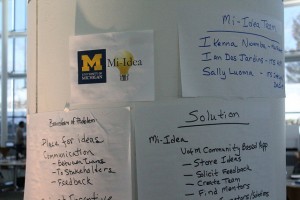
Every available surface was used to brainstorm and organize ideas.
For two days, over 100 participants in 20 teams worked to develop projects in 3 categories – gamification, collaboration, and play (which turned out to be the catch-all category for a problem you wanted to explore or experiment with). Projects could be either externally focused on our customers or internally focused on improving processes for technical staff. Many teams included members from the multiple IT groups solving common problems.
Each team was to develop a minimally viable product (MVP). An MVP is a simple way to address a problem that adds value, is demonstrable. An MVP can be an improved process, a new way of doing things, or an old tool applied in a new way.
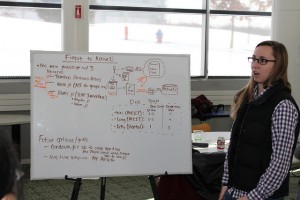
Poster presentation proposing FitBit integration with UM’s wellness app.
Each team had to create a winning presentation in three stages. First they needed to create an elevator description of the project, including problem statement, solution and differentiators. Then, they needed a five minute poster presentation. If chosen as a finalist, the team needed to prepare a seven minute demonstration of their product.
To succeed, the team needed to understand the strengths of their team members and welcome a broad range of experiences into the team. Best ideas come from co-design. A great reminder that hackathons are not just for people who can code!
Laura Patterson, the UM CIO, Ted Hanss, the Medical School CIO, and I were the judges. We applied these criteria:
- Fit to category – how well does the project fit the selected category?
- Feasibility – would this work in the real world?
- Completeness – how far did the team get in the allotted time?
- Documentation – did the team document what they learned?
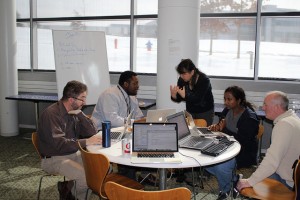
The winning team, “Magic Mirror,” hard at work.
The products proposed were creative and exciting. Some examples:
World of Workcraft – a game to track what we are learning everyday – books, articles, courses, conferences.
Active You – integrating FitBit with the ActiveU mobile app. I think a high percentage of the 11,870 participants in this UM employee wellness program would love this!
Rundeck – a way to automate system administrator tasks using the Rundeck tool.
The winner of the Hacks with Friends event was Magic Mirror – putting student photos in their profiles in the new learning system to help faculty get to know students and students get to know one another. The runner-up was Go Phish – an interactive training tool to help people recognize phishing email leveraging gaming technology.
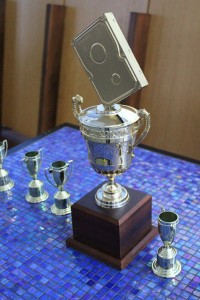
The coveted “golden hard drive” trophy.
But from another perspective, Activity in Motion (AIM) was the winner for me. This was a team led by Sally Pollock, Manager of IT Service Management from my IT department, that developed a multi-platform application to capture and centralize major incident activity real-time. Benefits include: providing real-time information, minimizing distractions during the major incident call, minimizing the duration of the major incident, capturing a list of participants, making activity highly visible and storing it in a database, where it can be used for reporting and the post incident review process.
The team’s presentation helped me realize the current state of managing major incidents and how a simple app like this could improve the process. I jumped on it. I asked the team to present to my leadership group meeting on Wednesday and we gave directional support for this solution. They will come back in a month with recommendations on how to fit this solution into our current major incident process.
A great example of how a hackathon opened one leader’s eyes to a problem that needed to be solved.
 added a section for my interim CIO engagement at University Hospitals.
added a section for my interim CIO engagement at University Hospitals.


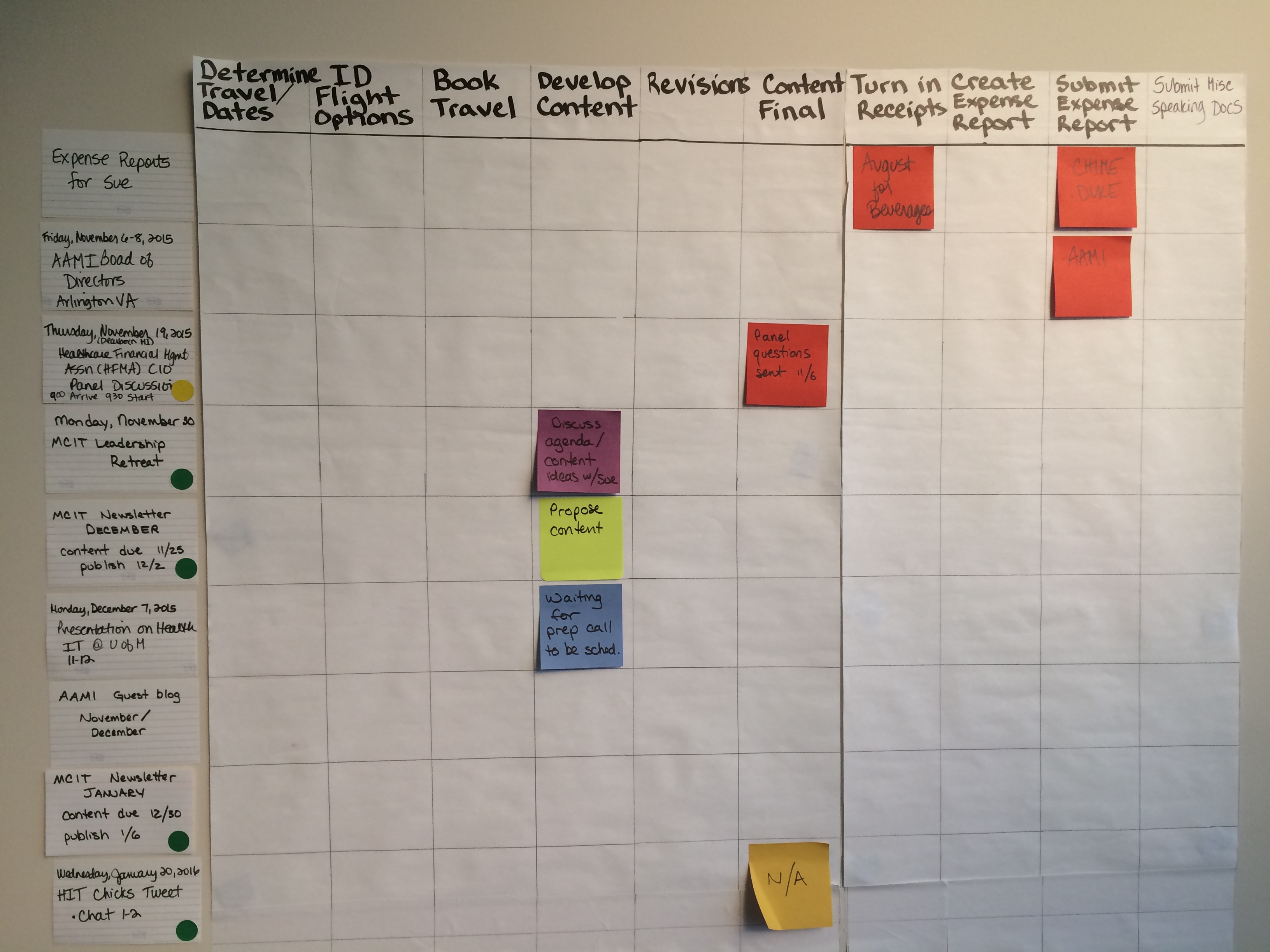 The past month has been a particularly busy one for me. I have spoken locally a few times and gone out of town on business several times as well. I’ve been to the CHIME Fall Forum, made a
The past month has been a particularly busy one for me. I have spoken locally a few times and gone out of town on business several times as well. I’ve been to the CHIME Fall Forum, made a  Hackathons are a great way to surface problems and prototype solutions in a short time period. I just participated in my first hackathon and what an eye-opener it was.
Hackathons are a great way to surface problems and prototype solutions in a short time period. I just participated in my first hackathon and what an eye-opener it was.



 You’re just glad that you don’t have to get up at the crack of dawn to shovel out your driveway and try to get down your unplowed street.
You’re just glad that you don’t have to get up at the crack of dawn to shovel out your driveway and try to get down your unplowed street.